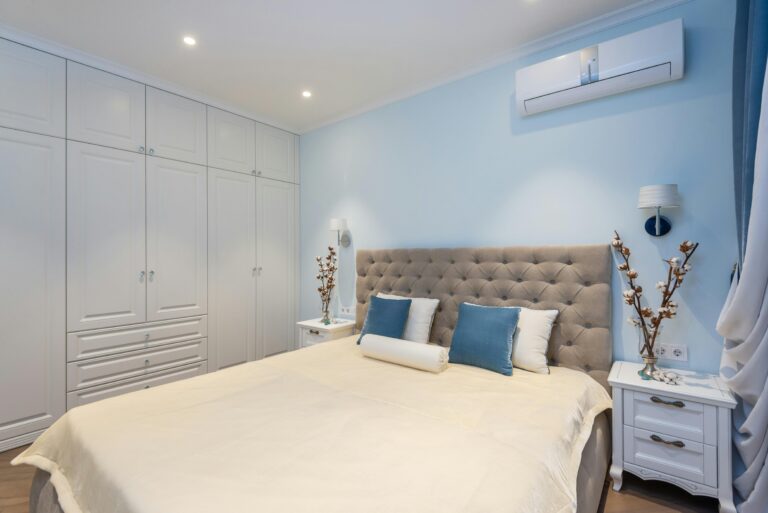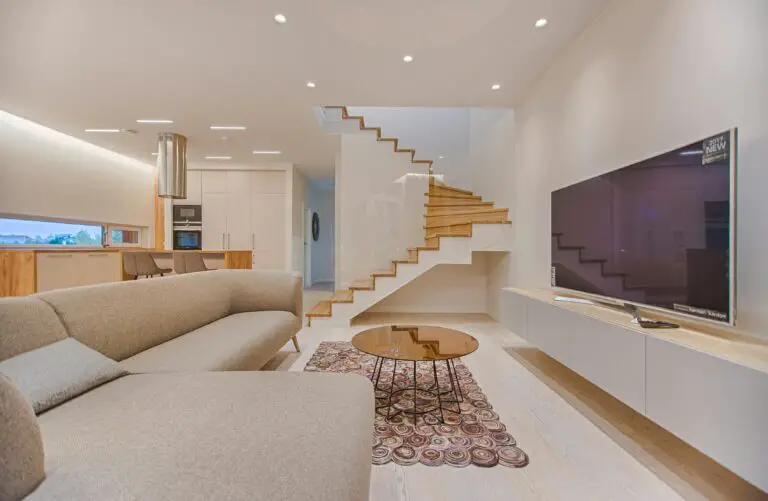In a fast-paced, modern world, the desire for tranquility and a connection to nature is ever-present. One way to infuse your living spaces with a sense of calm and harmony is by embracing earth tones in your interior design. Earth tones, inspired by the natural world, evoke feelings of warmth, comfort, and sustainability.
In this comprehensive guide, we’ll explore the art of using earth tones in contemporary interior design, from understanding the color palette to practical implementation. Let’s embark on a journey to transform your home into a haven of serenity and style.
Understanding Earth Tones
Earth tones encompass a palette of colors inspired by the elements of the earth—earth, water, air, and fire. These colors include warm browns, soft greens, muted blues, gentle terracottas, and serene grays.
1. Range of Colors Considered as Earth Tones
Earth tones are not limited to a specific set of colors but rather a spectrum that mimics nature’s hues. This spectrum includes various shades of brown, green, blue, and muted reds and oranges.
2. Psychological and Emotional Effects of Earth Tones
Earth tones have a calming and grounding effect on the human psyche. They can create a sense of stability, balance, and connectedness to the natural world, making them ideal for contemporary interior spaces.
The Appeal of Earth Tones in Contemporary Design
1. Connection to Nature and Sustainability
Using earth tones in your interior design allows you to bring the beauty of the outdoors inside. It’s a design choice that resonates with sustainability, promoting a sense of environmental responsibility.
2. Versatility and Adaptability in Contemporary Spaces
Earth tones are incredibly versatile and can complement a wide range of contemporary design styles. Whether you prefer minimalism, bohemian chic, or industrial aesthetics, earth tones can adapt seamlessly.
3. Creating a Sense of Warmth and Comfort
Perhaps one of the most significant advantages of earth tones is their ability to infuse spaces with a cozy and welcoming ambiance. These colors naturally evoke feelings of comfort and relaxation.
Incorporating Earth Tones in Different Interior Elements
1. Walls and Paint Choices
You can start by painting your walls in earthy hues or using earth-toned wallpapers as a backdrop for your interior. Colors like warm beige, soft sage, or deep terracotta can transform the atmosphere of a room.
2. Furniture and Upholstery
Consider earth-toned furniture pieces, such as leather sofas in rich brown or olive green, or upholstered chairs and cushions in earthy shades. These elements add both comfort and style to your space.
3. Flooring and Rugs
Natural materials like hardwood floors or bamboo are excellent choices. Enhance the warmth with rugs in earthy colors and textures, such as jute or wool in shades of sand or muted green.
4. Accessories and Decor Items
Decorate with earth-toned accessories like pottery, ceramics, and artwork. These accents can be the perfect finishing touch to tie your design together.
5. Lighting and Fixtures
Choose lighting fixtures that complement your earthy color scheme. Copper, brass, or matte black fixtures can add a touch of sophistication to your space.
Earth Tones in Various Contemporary Interior Styles
In minimalist and Scandinavian interiors, earth tones can create a sense of simplicity and serenity. These colors provide a warm contrast to the clean lines and white spaces often found in these styles.
2. Bohemian and Eclectic Styles
Earth tones are a staple in bohemian and eclectic interiors. They contribute to the eclectic mix of textures and patterns, creating a vibrant and welcoming atmosphere.
3. Industrial and Rustic Aesthetics
In industrial and rustic spaces, earth tones can soften the harshness of metal and concrete, creating a more inviting and comfortable environment.
4. Mid-century Modern and Contemporary Chic
Earth tones can add depth and sophistication to mid-century modern and contemporary chic interiors. Use them in furniture, textiles, and accents to create a timeless appeal.
Tips for Using Earth Tones Effectively
1. Creating Color Palettes and Schemes
To use earth tones effectively, develop a color palette that balances various shades and hues. Consider using color harmony techniques like analogous or complementary colors.
2. Balancing Earth Tones with Neutrals and Pops of Color
While earth tones are inviting, it’s essential to balance them with neutral colors like white, gray, or beige. Adding pops of contrasting colors can also create visual interest.
3. Incorporating Natural Textures and Materials
Enhance the earthy feel by incorporating natural textures like wood, stone, and jute. These materials complement earth tones beautifully and add depth to your design.
4. Using Lighting to Enhance Earth Tone Ambiance
Proper lighting is crucial when using earth tones. Soft, warm lighting can highlight the colors and create a cozy atmosphere.
Conclusion
Embracing earth tones in contemporary interior design is a choice that resonates with our inherent connection to nature. By using these warm and inviting colors, you can create spaces that are not only visually pleasing but also emotionally enriching. From selecting the right colors to balancing elements and implementing design strategies, you now have the tools to craft an interior that embodies harmony, comfort, and sustainability.
Frequently Asked Questions
1. Why use earth tones in interior design?
Using earth tones in interior design creates a warm, inviting, and grounded atmosphere. These colors connect you to nature, evoke feelings of comfort, and promote sustainability.
2. What are the colors for contemporary interior design?
Contemporary interior design often incorporates a neutral base with pops of color. Earth tones like brown, green, and muted reds and oranges are popular choices for adding warmth and depth.
3. Are earth tones trending?
Yes, earth tones have been a timeless and enduring trend in interior design. Their versatility and connection to nature continue to make them a popular choice.
4. What are the benefits of earth tones?
The benefits of earth tones in interior design include creating a sense of warmth, comfort, and harmony. They also promote a connection to nature and sustainability.
5. What is the benefit of neutral colors and earth tones?
Neutral colors and earth tones work well together to create a balanced and inviting interior. Neutrals provide a versatile backdrop for earth tones to shine.
6. Who do earth tones look good on?
Earth tones can complement a wide range of design styles and personal preferences. They look good in various interior settings, from minimalist to eclectic.
7. What do earth tones symbolize?
Earth tones symbolize elements of the natural world, such as earth, water, air, and fire. They evoke feelings of stability, balance, and connectedness to nature.
8. What are the characteristics of earth tones?
Earth tones are characterized by warm browns, soft greens, muted blues, gentle terracottas, and serene grays. They mimic the colors found in the natural environment.
9. What colors go with earth tones?
Earth tones can be complemented by neutrals like white, gray, and beige. You can also add pops of contrasting colors like deep blues or muted yellows for visual interest.
10. What are four earth tone colors?
Four common earth tone colors include warm brown, soft green, muted blue, and gentle terracotta. These colors create a harmonious and calming palette.
11. Can you wear earth tones together?
Yes, you can mix and match earth tones in clothing to create stylish and coordinated outfits. Experiment with different shades and textures for a sophisticated look.
12. Can you mix earth tones?
Mixing earth tones in interior design is a great way to create depth and visual interest. Experiment with various shades and hues to find the perfect combination for your space.



